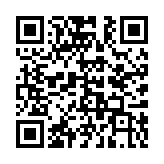In the high-speed hustle of modern professional life, we often find ourselves chasing time, trying to grasp every fleeting minute. Productivity isn’t just a buzzword; it’s a lifeline that keeps us afloat in a sea of deadlines, meetings, and endless tasks. If you’re like me, a busy professional always on the lookout for the best way to streamline your day, you know that most productivity systems seem to add more to our plates rather than taking off the load.
That’s why I’ve refined a no-fuss, high-impact productivity system that cuts through the noise. It’s a straightforward approach that resonates with the daily grind of our lives. This system doesn’t require complex apps or the latest gadgets; it thrives on the bare essentials, making it perfect for the realist who needs to get things done now.
Strategy 1: The Inverted Pyramid Method 🕒
Picture your day as an inverted pyramid. This is about prioritization. The most critical task sits at the wide top, where you pour a generous three hours of focused effort. As the pyramid tapers, so do the time allocations for less critical tasks, going down to two hours and then one.

How It Works:
- Identify the Most Important Task (MIT): Start with what would make the most significant impact on your day or your overall goal.
- Allocate Time: Dedicate a solid block of time to this MIT. No distractions, just deep work.
- Descend the Pyramid: Move on to the next priorities in decreasing time increments.
The inverted pyramid is flexible. You can adjust the time allocations based on your workload and energy levels, but the principle remains: start with the most significant task and work your way down.
Strategy 2: The Pareto Principle or the 80/20 Rule 📊
The Pareto Principle is the idea that 80% of effects come from 20% of causes. It’s about leveraging the most impactful actions to yield the greatest results.

Applying the Principle:
- Evaluate Your To-Do List: Look at your tasks and ask which ones will have the most considerable impact.
- Focus on High-Leverage Activities: Direct your efforts toward these high-impact activities.
- Minimize Low-Impact Work: Avoid spending too much time on tasks that don’t contribute significantly to your goals. Remember, the Pareto Principle isn’t about doing less work; it’s about doing more of the right work.
Strategy 3: Intelligent Breaks 🚶♂️
Work smart, not hard. That means taking breaks — but not just any breaks. Smart breaks can enhance productivity, while poor ones can detract from it.

What to Do on a Break:
- High-Intensity Exercise: Even a few minutes can significantly boost BDNF, which is great for brain health and focus.
- Mindfulness Practices: Meditation or deep breathing can reset your mental state.
- Nature Walks: A stroll outside can rejuvenate your mind and body. The idea is to step away from your work in a way that refreshes you, not one that further fragments your attention.
Strategy 4: Focused Work Blocks 🧘♀️
When it’s time to work, really work. This is about undivided attention and eliminating multitasking.

Tips for Focused Work:
- Create a Distraction-Free Environment: Silence your phone, close unnecessary tabs, and clear your workspace.
- Use Tools to Enhance Focus: Noise-cancelling headphones or apps that block distracting websites can help.
- Single-Task: Focus entirely on one task at a time to maximize efficiency and quality of work.
In summary, the essence of this productivity system lies in its simplicity and flexibility. It’s about making the most of your time and effort by focusing on what truly matters. Whether you’re aiming for academic excellence, professional growth, or personal development, these strategies can be tailored to fit your needs and help you achieve your goals.
Until next time, keep it productive, folks! 🔥
